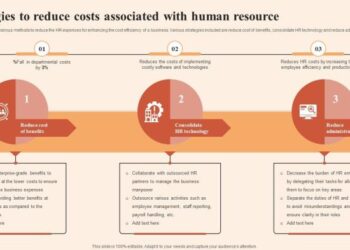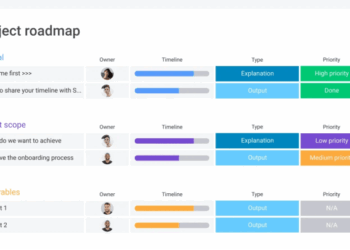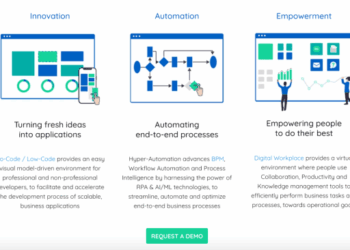Embark on a journey through the intricacies of the US Stock Market Opening & Closing Bell Analysis, where we delve into the significance of these pivotal moments and uncover the trends and behaviors that characterize them.
Explore how market volatility and sector performance play a role in shaping the opening and closing bells, providing valuable insights for investors navigating these events.
Opening Bell Analysis
The US stock market opening bell holds great significance as it marks the beginning of the trading day and sets the tone for investor sentiment. Traders and analysts closely watch the market's reaction during the opening bell to gauge the overall market direction for the day.During the opening bell, there is often heightened volatility as traders react to overnight developments, economic data releases, and global events.
This initial period can set the pace for the day, with sharp movements in stock prices as orders flood in from various market participants.
Market Reaction
- Stock prices may gap up or down at the opening bell, reflecting pre-market sentiment and news.
- High trading volumes are common as investors rush to buy or sell positions based on new information.
- Market indices such as the S&P 500 and Dow Jones Industrial Average can show early signs of the market's direction for the day.
Trends and Patterns
- Some traders believe in the "fade the gap" strategy, where they expect the market to reverse initial movements after the opening bell.
- Certain sectors or stocks may exhibit consistent behavior during the opening bell, influenced by sector-specific news or events.
- Market participants often use the opening bell as an opportunity to position themselves for the day ahead, leading to predictable patterns in trading activity.
Closing Bell Analysis
The closing bell in the US stock market signals the end of the trading day and is a crucial moment for investors and traders alike. It marks the final opportunity to execute trades for the day and is often accompanied by increased volatility as market participants rush to finalize their positions before the market closes.During the closing bell, the market typically experiences heightened activity as traders adjust their portfolios based on the day's developments.
This can lead to increased volume and price movements as investors react to news, economic data, or corporate announcements that may have been released throughout the day.
Market Behavior at Closing Bell
- Volatility: The closing bell is known for increased volatility, with prices often experiencing last-minute fluctuations as traders rush to buy or sell shares.
- Volume Spike: Trading volume tends to surge during the closing bell as market participants try to close out their positions before the market closes.
- Position Squaring: Traders may engage in position squaring during the closing bell, adjusting their exposure to certain assets or sectors based on their outlook for the next trading day.
- Impact of News: Any significant news or events announced towards the end of the trading day can have a pronounced effect on stock prices during the closing bell.
Market Volatility
Market volatility plays a significant role in impacting the opening and closing bells of the stock market. It refers to the degree of variation of trading prices over time, which can lead to fluctuations in the market and affect investor sentiment.
Impact on Opening and Closing Bells
Market volatility can be particularly high during the opening bell as investors react to overnight news, economic data releases, and global events that occurred outside of regular trading hours. This can lead to rapid price movements and increased trading volume, causing heightened volatility
.
On the other hand, during the closing bell, market volatility may also increase as investors rush to make last-minute trades before the market closes. This can result in price swings and increased uncertainty as traders try to position themselves for the next trading day.
Comparison of Volatility Levels
The volatility levels during the opening bell are typically higher compared to the closing bell due to the influx of new information and investor reactions. The uncertainty and rapid trading activity at the market open often contribute to increased volatility, which can lead to sharp price movements.
During the closing bell, while volatility levels may still be elevated, they tend to stabilize as the trading day comes to an end. Investors may choose to square off their positions or adjust their portfolios, leading to a different dynamic compared to the opening bell.
Investor Strategies
To navigate volatility during market openings and closings, investors may employ various strategies such as setting limit orders to control buy and sell prices, using stop-loss orders to limit potential losses, diversifying their portfolios to spread risk, and staying informed about market developments to make informed decisions.
Additionally, some investors may choose to avoid trading during times of high volatility or use volatility-based indicators and technical analysis to identify potential opportunities or risks in the market.
Sector Performance
When analyzing sector performance during the opening bell versus the closing bell, it is important to consider how different industries react to market activity at these specific times.
Some sectors are typically more active during the opening bell as investors react to overnight news, economic data releases, and pre-market trading. These sectors may include technology, healthcare, and consumer discretionary.
Technology Sector
- The technology sector often sees increased activity during the opening bell as investors react to earnings reports, product launches, or industry news.
- Stocks like Apple, Microsoft, and Amazon are closely watched during this time as they can set the tone for the overall market direction.
- Volatility may be higher in technology stocks during the opening bell due to the influx of information and trading activity.
Consumer Discretionary Sector
- Retailers and consumer goods companies in the consumer discretionary sector may see fluctuations in stock prices during the opening bell based on consumer confidence reports or retail sales data.
- Stocks like Walmart, Target, and Nike could be particularly active during this time as investors gauge consumer spending trends.
- Market sentiment towards the overall economy can influence trading activity in consumer discretionary stocks during the opening bell.
Healthcare Sector
- The healthcare sector may experience volatility during the opening bell as investors react to regulatory changes, drug approvals, or healthcare policy updates.
- Companies like Johnson & Johnson, Pfizer, and Moderna may see heightened trading volume during this time based on industry-specific news.
- Investor sentiment towards healthcare stocks can shift rapidly during the opening bell, impacting sector performance.
Final Conclusion
In conclusion, the US Stock Market Opening & Closing Bell Analysis offers a nuanced perspective on market dynamics, shedding light on the patterns and strategies that drive trading activities during these key periods.
Quick FAQs
How does market volatility impact the opening and closing bells?
Market volatility can lead to heightened activity and fluctuations in prices during these periods, influencing investor behavior and trading strategies.
Which sectors are typically active during the opening bell and closing bell?
Sectors such as technology, finance, and energy are often active during the opening bell, while defensive sectors like utilities and consumer staples may see more activity during the closing bell.
Are there specific trends related to sector performance during the opening and closing bells?
Some sectors may exhibit higher volatility or increased trading volume during one bell over the other, reflecting unique market dynamics and investor sentiment.









